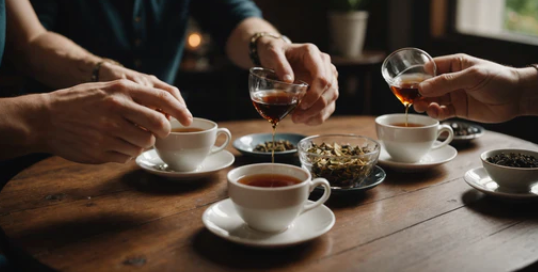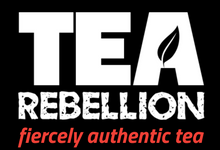
Master the Art of Tea Tasting and Expand Your Tea Palate
Embark on a sensory journey and unlock the nuances of tea with the art of tea tasting. Through this practice, you will learn to discern the subtle differences in aroma, flavor, and appearance, transforming your daily tea ritual into a rich and rewarding experience. Join us as we delve into the world of tea tasting, where each sip offers a glimpse into the diverse and fascinating realm of teas from around the globe. Elevate your tea-drinking experience and discover the joys of exploring a variety of teas, from classic favorites to rare blends, as you hone your palate and immerse yourself in the art of tea tasting.
Understanding Tea Palate
What is a Tea Palate?
The concept of a tea palate refers to an individual's ability to discern and appreciate the various flavors, aromas, and qualities present in different types of tea. Developing a refined tea palate involves honing your senses to identify nuances in taste, aroma, mouthfeel, and appearance that distinguish one tea from another.
How to Train Your Tea Palate
Training your tea palate is a gradual process that requires practice, patience, and an open mind. Here are some tips to help you enhance your tea tasting skills:.
- Taste Mindfully : Take the time to savor each sip of tea, paying attention to how the flavors evolve on your palate.
- Sip Pure: Avoid adding milk, sugar or other additives. Taste the untained pure leaf
- Compare and Contrast : Taste different types of tea side by side to discern their unique characteristics and flavor profiles.
- Take Notes : Keep a tea journal to record your observations and track your progress in developing your tea palate.
- Attend Tea Tastings : Participating in tea tastings and workshops can expose you to new teas and tasting techniques.
Factors Influencing Tea Tasting
Several factors can influence how we perceive and appreciate the taste of tea. Some key factors include:.
- Terroir : The geographical region where the tea is grown can impact its flavor and aroma.
- Processing Methods : The way tea leaves are harvested, processed, and brewed can affect their taste and quality.
- Water Quality : The type of water used to brew tea can influence its taste, as different water sources contain varying mineral content.
- Brewing Parameters : Factors such as water temperature, steeping time, and tea-to-water ratio can impact the final taste of brewed tea.
Expanding Your Tea Palate
To truly understand and appreciate the world of tea, consider exploring the following aspects:.
- Tea Varieties : Delve into different types of tea such as green, black, oolong, white, and herbal teas to experience a wide range of flavors and aromas.
- Tea Regions : Explore teas from various regions like China, Japan, India, and Sri Lanka, each known for producing unique teas influenced by their terroir and processing techniques.
- Tea Pairings : Experiment with pairing teas with different foods to discover how flavors complement or contrast each other.
- Tea Ceremonies : Learn about traditional tea ceremonies from around the world to understand the cultural significance and rituals associated with tea consumption.
By immersing yourself in the diverse world of tea, experimenting with different brewing methods, and continuously expanding your tea palate through tasting sessions and exploration, you can develop a deep appreciation for the art and science of tea appreciation.
Mastering Tea Tasting Techniques
Tea tasting is not just a simple act but an intricate art that demands practice, patience, and a keen sense of observation to truly uncover the subtle nuances and flavors of various teas. Delving into the realm of tea tasting can be an enriching experience, allowing you to develop a profound appreciation for the diverse array of teas available. To master the art of tea tasting, one must immerse themselves in the process and follow a set of essential steps and tips that elevate the tasting experience to new heights.
Steps to Properly Taste Tea
-
Observe the Dry Leaves : Before brewing the tea, take a moment to carefully examine the dry tea leaves. Notice their appearance, texture, color, and aroma. These initial observations can provide valuable insights into the tea's quality and potential flavor profile.
-
Prepare the Tea : Following the recommended brewing guidelines specific to the type of tea being tasted is crucial. Pay close attention to factors such as water temperature, steeping duration, and tea-to-water ratio to ensure optimal flavor extraction and a well-balanced cup of tea.
-
Sip Mindfully : When tasting the brewed tea, take small, deliberate sips and allow the tea to coat your entire palate. Take note of the evolving flavor notes, aroma, and mouthfeel with each sip. Engage all your senses to fully appreciate the complexity of the tea.
-
Consider the Aftertaste : The lingering aftertaste, also known as the finish, offers valuable insights into the tea's quality and flavor profile. Note the duration of the aftertaste, any lingering sweetness, bitterness, or other flavor characteristics that emerge.
Tips for Enhancing Your Tea Tasting Experience
-
Use Clear Small Cups : Sometimes called aroma cups, they are designed to capture and concentrate the tea's fragrance, can heighten your sensory experience and aid in identifying the nuanced aromas present in the tea. If not available use clear or white cups so your senses can experience the tea's liquor
-
Experiment with Water : Water quality plays a significant role in tea brewing. Explore using different water sources such as spring water, filtered water, or mineral water to discern how each influences the tea's taste and aroma.
-
Cleanse Your Palate : To ensure accurate flavor perception between tea tastings, cleanse your palate with plain water or unsalted crackers. This practice helps reset your taste buds and ensures a fresh start for each new tea.
-
Document Your Journey : Maintaining a tea tasting journal can be a valuable tool for tracking your tasting experiences, preferences, and discoveries. Record details such as tea type, brewing parameters, tasting notes, and personal ratings to build a comprehensive reference guide.
Enhancing Your Tea Palate
Tea lovers are often on a quest to elevate their tea drinking experience, seeking to unlock the nuances and complexities of various tea varieties. One key aspect that can significantly enhance this journey is by focusing on palate training. Palate training involves developing an awareness of different flavor profiles, aromas, and textures, enabling individuals to discern subtle differences in teas. By honing this skill, tea enthusiasts can truly appreciate the diversity that the world of tea has to offer.
Experimenting with loose tea is another pivotal step in expanding one's tea palate. Unlike tea bags, which often contain broken tea leaves, using loose tea allows for a more authentic and full-bodied flavor experience. The process of preparing loose tea also offers a sensory delight, from observing the unfurling leaves to inhaling the rich aromas that emanate during steeping.
Moreover, following optimal tea preparation techniques is crucial in extracting the best taste from your tea. Factors such as water temperature, steeping time, and tea-to-water ratio can significantly impact the final flavor profile. By paying attention to these details, tea enthusiasts can ensure that they are experiencing their teas in the most flavorful and nuanced way possible.
Enhancing your tea palate through palate training, experimenting with loose tea, and perfecting tea preparation methods can lead to a more profound tea drinking experience. The ability to distinguish subtle flavor nuances, appreciate the complexity of different teas, and savor each cup to its fullest can truly elevate one's tea journey to new heights.
To further enhance your tea palate, consider exploring different tea varieties from various regions. Each tea-growing region imparts unique characteristics to its teas, influenced by factors like climate, soil, and processing techniques. Sampling teas from diverse origins can broaden your flavor repertoire and deepen your understanding of the art of tea.
Additionally, engaging in tea tasting sessions or joining tea appreciation workshops can provide valuable insights and guidance on how to refine your tasting skills. These events often involve tasting multiple teas side by side, allowing you to compare and contrast flavors, aromas, and textures. Such experiences can sharpen your palate and help you articulate your tea preferences more effectively.
Furthermore, don't hesitate to document your tea journey. Keeping a tea journal where you record your tasting notes, brewing techniques, and tea pairings can be a rewarding practice. Over time, this log can serve as a valuable reference, helping you track your progress, identify flavor trends, and revisit your favorite tea discoveries.
In essence, by immersing yourself in the world of tea through continuous exploration, practice, and reflection, you can cultivate a refined tea palate that enhances your overall tea-drinking enjoyment and appreciation.
Conclusion
Mastering the art of tea tasting is a rewarding journey that not only enhances your sensory experience but also deepens your appreciation for the rich world of teas. By expanding your tea palate, you open yourself up to a world of diverse flavors, aromas, and complexities that can bring immense joy and satisfaction to your tea-drinking rituals. So, take the time to explore different teas, practice your tasting skills, and savor each cup with mindfulness and curiosity.
